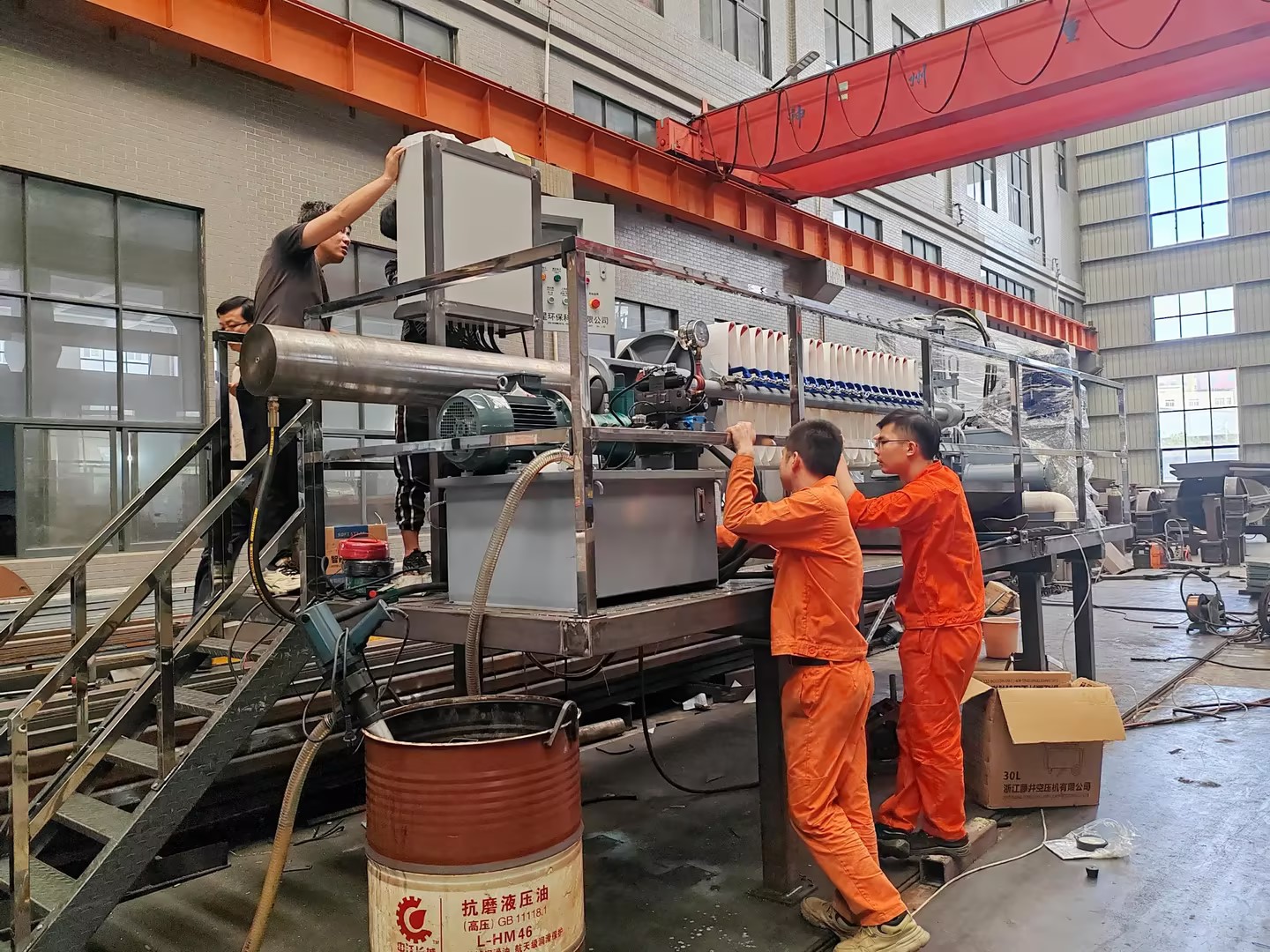Assine O Boletim
Para mais informações sobre nossos produtos ou preços, por favor deixe-nos e nós entraremos em contato dentro de 24 horas.
No campo industrial, a separação sólido-líquido é uma etapa indispensável e importante em muitos processos de produção, e os filtros-prensa hidráulicos são auxiliares poderosos para atingir esse objetivo. Então, como isso realmente funciona? Vamos explorar a verdade.
O filtro-prensa hidráulico é composto principalmente de várias partes. O rack robusto fornece suporte estável para todo o dispositivo; A placa de filtro é o componente central e sua superfície é coberta com um pano de filtro, como uma tela de malha fina; Existem também sistemas hidráulicos e dispositivos de fixação cruciais. Essas peças trabalham juntas para formar o sistema de trabalho do filtro-prensa hidráulico.
Ao trabalhar, a primeira coisa a fazer é se preparar bem. Durante a fase de instalação, é necessário garantir que o rack esteja estável e firme, que as placas do filtro estejam bem dispostas e que o pano do filtro esteja plano e limpo. Após a instalação, depure cuidadosamente e verifique se a pressão do sistema hidráulico e outros parâmetros atendem aos padrões e se as ações da válvula são flexíveis e precisas. Ao mesmo tempo, é necessário pré-processar os materiais para atender aos requisitos de alimentação.
Em seguida, entre na fase de alimentação. Depois de iniciar a bomba de êmbolo, o material entra rapidamente na câmara do filtro entre as placas do filtro sob pressão. À medida que o material continua a encher, a pressão dentro da câmara do filtro aumenta e o líquido é descarregado através do pano do filtro, enquanto as partículas sólidas permanecem dentro da câmara do filtro para formar uma torta de filtro.
Em alguns casos, podem ser realizadas operações de compressão. Quando a torta do filtro atinge uma certa espessura, o sistema hidráulico é ativado e o dispositivo de fixação aplica pressão à placa do filtro para espremer ainda mais o líquido residual na torta do filtro, tornando o material sólido mais seco.
Se necessário, lavar operações também serão realizadas. Feche a válvula de alimentação e injete solução de lavagem, que pode remover impurezas da torta de filtro e melhorar a pureza do material.
Após concluir as etapas acima, ele entra na fase de descarga. Pare primeiro os dispositivos relevantes, libere a placa do filtro através do sistema hidráulico e, em seguida, remova manualmente ou automaticamente a torta do filtro. Após descarregar, limpe o pano do filtro e a placa do filtro em tempo hábil para se preparar para o próximo uso.
Com esse fluxo de trabalho, os filtros-prensa hidráulicos demonstraram suas capacidades em muitos setores, como mineração, produtos químicos, alimentos e proteção ambiental, concluindo com eficiência tarefas de separação sólido-líquido e fornecendo suporte à produção industrial. Com o desenvolvimento da tecnologia, ela desempenhará, sem dúvida, um papel maior em ajudar diversas indústrias a progredir continuamente.

Para mais informações sobre nossos produtos ou preços, por favor deixe-nos e nós entraremos em contato dentro de 24 horas.